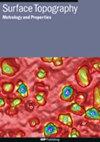陶瓷、复合材料和陶瓷/复合材料界面的磨损行为
IF 2
3区 材料科学
Q2 ENGINEERING, MECHANICAL
引用次数: 0
摘要
目标。本研究旨在评估刷牙对两种复合材料、三种陶瓷材料和陶瓷/复合材料界面磨损行为的影响。材料和方法。纳米填充(Filtek Ultimate)和纳米混合复合材料(Spectra ST HV)用于修复混合陶瓷(Vita Enamic)、树脂纳米陶瓷(Katana Avencia)和氧化锆块(Katana zirconia)。使用非接触式光学轮廓术和扫描电子显微镜(SEM)对复合材料、陶瓷和陶瓷/复合材料界面进行为期一个月和一年的牙刷磨损测试前后的检查。数据分析采用双向方差分析和Bonferroni校正。差异有统计学意义,p < 0.05。结果。Vita Enamic、Katana Avencia、Filtek Ultimate和Spectra的表面粗糙度在刷牙一个月和一年之后没有差异。经过一年的刷牙,发现Katana氧化锆材料中的Sa值明显低于对照组。采用纳米填充材料和纳米复合材料对杂化陶瓷和树脂纳米陶瓷CAD/CAM材料进行修复后,修复界面的表面粗糙度在不同的涂刷次数下是相似的。结论。Vita Enamic, Katana Avencia, Filtek Ultimate和Spectra材料在临床修复应用中是首选,因为它们在不同时间刷牙后表现出相似的磨损行为。对于氧化锆材料,经过一年的涂刷后,修复界面的表面粗糙度与陶瓷和复合材料表面相似。因此,当这些产品在临床上使用时,可能需要定期召回和重新抛光。本文章由计算机程序翻译,如有差异,请以英文原文为准。
Wear behavior of ceramic, composite, and ceramic/composite interfaces
Objective. This study has aimed to evaluate the effects of toothbrushing on the wear behavior of two composites, three ceramic materials, and ceramic/composite interfaces. Material and Methods. Nanofilled (Filtek Ultimate), and nanohybrid composites (Spectra ST HV) were used for the repair of a hybrid ceramic (Vita Enamic), resin nanoceramic (Katana Avencia), and zirconia block (Katana Zirconia). Composites, ceramics, and ceramic/composite interfaces were examined before and after a period of one-month and one-year of toothbrush abrasion testing using non-contact optical profilometry and scanning electron microscopy (SEM). Data were analyzed by two-way ANOVA and Bonferroni correction. The statistical significance level was set at p < 0.05. Results. No difference was found between the surface roughness of the Vita Enamic, Katana Avencia, Filtek Ultimate, and Spectra surfaces after one month and one year of toothbrushing. Sa values in Katana Zirconia material were found to be significantly lower than those in the control group after one year of brushing. The surface roughness of the repair interfaces formed by repairing hybrid ceramic and resin nanoceramic CAD/CAM materials with nanofilled and nanohybrid composite materials was found to be similar after different brushing times. Conclusion. Vita Enamic, Katana Avencia, Filtek Ultimate, and Spectra materials can be preferred in clinical repair applications, since they exhibit similar wear behavior after brushing at different times. For the zirconia material, the repair interface had similar surface roughness as the ceramic and composite surfaces after one year of brushing. Periodic recalls and re-polishing may thus be necessary when these products are used clinically.
求助全文
通过发布文献求助,成功后即可免费获取论文全文。
去求助
来源期刊

Surface Topography: Metrology and Properties
Materials Science-Materials Chemistry
CiteScore
4.10
自引率
22.20%
发文量
183
期刊介绍:
An international forum for academics, industrialists and engineers to publish the latest research in surface topography measurement and characterisation, instrumentation development and the properties of surfaces.
 求助内容:
求助内容: 应助结果提醒方式:
应助结果提醒方式:


